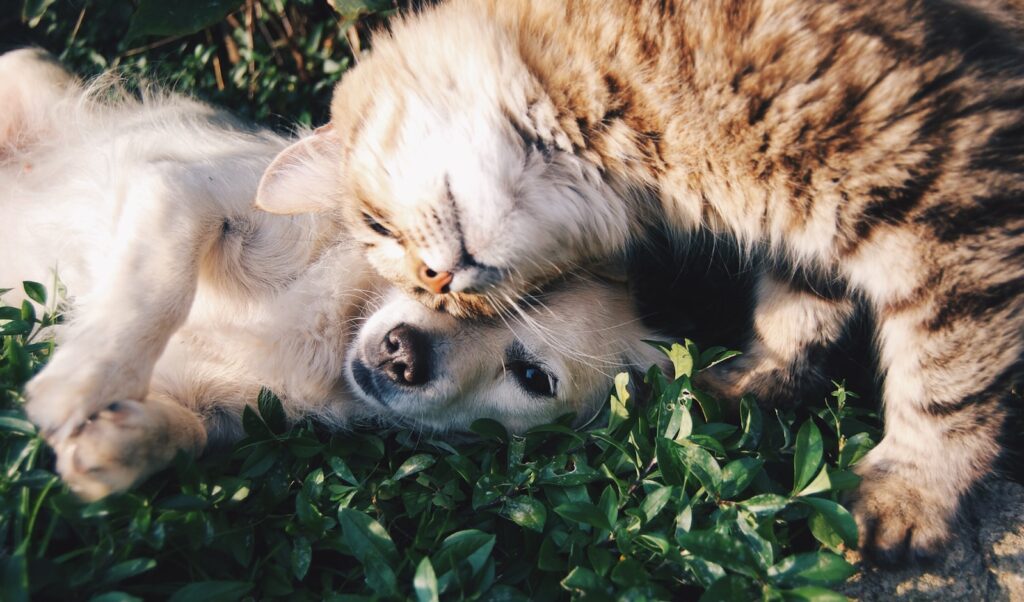Dogs are wonderful companions and loyal friends. Their behavior can be fascinating and sometimes puzzling. One of the behaviors that often intrigues dog owners is submissive behavior. If you’ve ever seen your dog roll over, expose its belly, or lower its body, you might have wondered why it does this. In this article, we’ll explore why dogs show submissive behavior, the science behind it, and what it means for you as a pet owner.
Introduction to Submissive Behavior in Dogs
Submissive behavior in dogs is a natural part of their communication and social structure. It’s a way for them to show respect, avoid conflict, and maintain harmony within their social group. This behavior is rooted in their ancestry and pack mentality. Understanding why dogs exhibit submissive behavior can help strengthen the bond between you and your furry friend and ensure a happy, healthy relationship.
The Roots of Submissive Behavior
Dogs are descendants of wolves, and much of their behavior is inherited from their wild ancestors. In a wolf pack, there’s a clear hierarchy, and each member of the pack has a specific role. Submissive behavior helps maintain this hierarchy and keeps the peace within the pack. When a wolf or dog shows submissive behavior, it’s acknowledging the dominance of another member and showing that it doesn’t want to challenge the status quo.
Signs of Submissive Behavior
There are several common signs of submissive behavior in dogs. These include:
- Rolling Over: When a dog rolls onto its back and exposes its belly, it’s showing complete submission. This is a vulnerable position that signals trust and respect.
- Lowering the Body: A dog may crouch down or lower its body to the ground to appear smaller and less threatening.
- Tucking the Tail: A submissive dog often tucks its tail between its legs. This is a sign of fear or submission.
- Avoiding Eye Contact: Direct eye contact can be seen as a challenge. A submissive dog will avoid looking directly into another dog’s or person’s eyes.
- Licking: Licking another dog’s muzzle or a human’s hand is a sign of submission and respect.
- Yawning or Lip Licking: These are subtle signs that a dog is feeling submissive or stressed.
Why Do Dogs Show Submissive Behavior?
There are several reasons why dogs display submissive behavior. Understanding these reasons can help you respond appropriately and support your dog’s emotional well-being.
To Avoid Conflict
One of the primary reasons dogs show submissive behavior is to avoid conflict. By displaying submission, a dog is signaling that it doesn’t want to fight or challenge the other dog or person. This behavior helps prevent aggression and maintains peace within the social group.
To Show Respect
Dogs use submissive behavior to show respect to more dominant members of their pack or family. This is especially common in multi-dog households, where dogs establish their own hierarchy. By showing submission, a dog acknowledges the higher status of another dog or person.
To Seek Reassurance
Sometimes, dogs show submissive behavior because they’re feeling anxious or uncertain. Rolling over or crouching down can be a way for them to seek reassurance and comfort from their owners or other dogs. It’s their way of saying, “I’m feeling a bit scared; please help me feel safe.”
Learned Behavior
Some dogs learn that submissive behavior elicits positive responses from their owners. If a dog rolls over and gets belly rubs, it may continue to do so because it enjoys the attention and affection. This learned behavior reinforces submissive actions.
How to Respond to Submissive Behavior
As a dog owner, it’s important to know how to respond to your dog’s submissive behavior in a way that builds trust and confidence. Here are some tips on how to handle these situations:
Stay Calm and Gentle
When your dog shows submissive behavior, respond with calm and gentle actions. Avoid harsh tones or sudden movements that could increase their anxiety. Instead, use a soothing voice and gentle petting to reassure them.
Offer Positive Reinforcement
Rewarding your dog for submissive behavior can help build their confidence. Offer treats, praise, and affection when they show signs of submission. This positive reinforcement helps them feel secure and loved.
Avoid Punishment
Never punish your dog for submissive behavior. Punishment can increase their fear and anxiety, leading to more submissive actions. Instead, focus on positive reinforcement and creating a safe environment for your dog.
Build Confidence
Help your dog build confidence by exposing them to new experiences in a controlled and positive way. Socialization with other dogs and people can reduce anxiety and encourage more confident behavior.
Conclusion
Submissive behavior in dogs is a natural and important part of their communication and social structure. By understanding why dogs show submissive behavior and how to respond appropriately, you can strengthen your bond with your furry friend and ensure their emotional well-being. Remember to stay calm, offer positive reinforcement, and avoid punishment. With patience and understanding, you’ll create a happy and confident companion.
FAQs
What Should I Do If My Dog Shows Submissive Behavior Around Other Dogs?
If your dog shows submissive behavior around other dogs, it’s important to monitor the interactions and ensure that the other dogs are not being aggressive. Submissive behavior is normal and helps maintain harmony, but make sure your dog feels safe and is not being bullied.
Is Submissive Behavior a Sign of Weakness?
No, submissive behavior is not a sign of weakness. It’s a natural way for dogs to communicate and show respect. In fact, it’s a sign of social intelligence and helps maintain peace within the pack or family.
Can I Train My Dog to Be Less Submissive?
You can help your dog build confidence through positive reinforcement and socialization. Expose them to new experiences gradually and reward confident behavior. Avoid punishing submissive actions, as this can increase anxiety.
Why Does My Dog Show Submissive Behavior Towards Me?
Your dog may show submissive behavior towards you as a sign of respect and trust. It’s acknowledging your role as the leader and seeking reassurance. Respond with gentle affection to reinforce the bond between you.
Is It Normal for Puppies to Show Submissive Behavior?
Yes, it’s normal for puppies to show submissive behavior. They’re learning about social structures and communication. Providing a safe and nurturing environment will help them grow into confident adult dogs.
How Can I Help My Dog Feel More Secure?
To help your dog feel more secure, provide a consistent routine, positive reinforcement, and plenty of affection. Socialization and exposure to new experiences in a controlled manner can also boost their confidence.
Should I Encourage My Dog to Be Submissive?
Encouraging submissive behavior is not necessary. Instead, focus on creating a balanced environment where your dog feels safe and confident. Reward positive behavior and provide support when they show signs of submission.
What If My Dog Shows Submissive Urination?
Submissive urination is a common behavior, especially in puppies. Avoid scolding your dog for this behavior. Instead, focus on building their confidence and creating a calm environment. Over time, this behavior usually diminishes.



